Physics in play
– Optics: design of a microscope with a drop of water and a smartphone
– Acoustics: design of rudimentary musical instruments, audio measurement by smartphone
– Classical mechanics (free fall)
The story in two words
The students embody a team from GITECH, a group of engineers supporting operations in the field. They discover that they must assist a secret agent who has infiltrated North Korean leader Kim Jong Un.
Preparations
You need a place where students can work in groups, and craft together. Ideally, a place that is unknown to them, so as to get them out of their habits. A TD room may be suitable, if it is not too full of tables (and if the tables are installed in an island). You also need a place for the ultimate test, with a height difference of about 5m: window, footbridge. Obvious safety conditions must be taken when throwing objects out the window. For hardware, see below.
INTRODUCTION
optional: The supervisor gives them a way to communicate with the spy (ex: via minnit.chat or a whatsapp channel or a discord that the supervisor will use in secret to play the spy). Then let the participants possibly ask questions to clarify the mission.
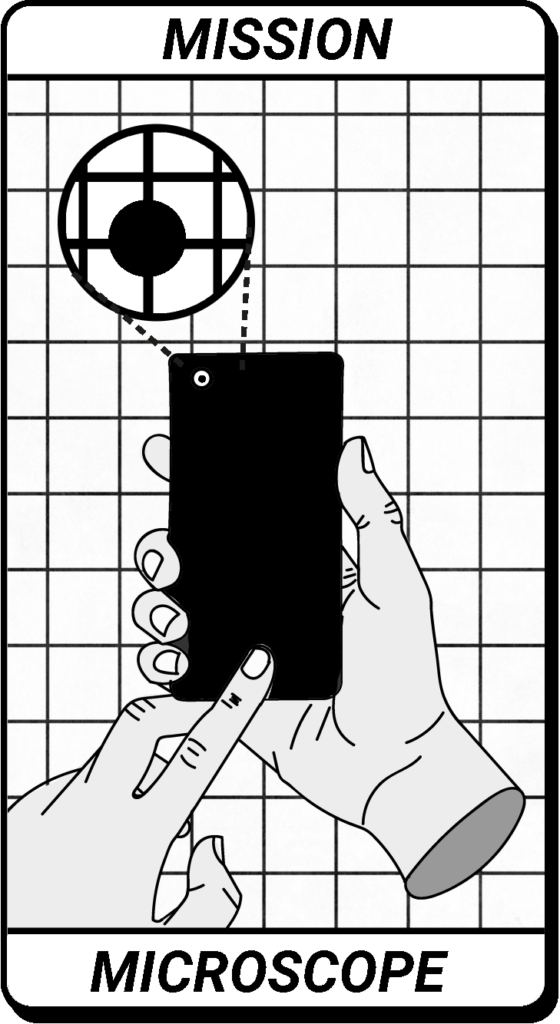
TASK : SMARTPHONE AS A MICROSCOPE
DAY 1 / morning
Students must design and characterize a microscope with a drop of water on their smartphone. They follow the MM27 protocol.
The protocol requires several actions, which can be more or less advanced depending on the objectives of the session and the level of the students:
– measure the magnification due to the drop (by finding the same way to measure it on the different smartphones, for example by magnifying a calibrated object like a ruler)
– measure the effect of the size of the drop of water calibrated as precisely as possible: we will see that the magnification varies inversely to the size.
– develop the most efficient sample holder possible with frugal means
– make an illustrated manual
For the final test, you have to choose an object to photograph. Banknotes are good objects, there are many small details hidden in them (especially in the arches of the bridges, we find the word EURO in the different alphabets of the EU).
Alternative: each team photographs a mystery object and the other teams have to guess which object it is.
After the final tests, the team must agree together (or on quantitative criteria) which is the best prototype and the supervisor announces that he will send the plan and photos to the spy immediately.
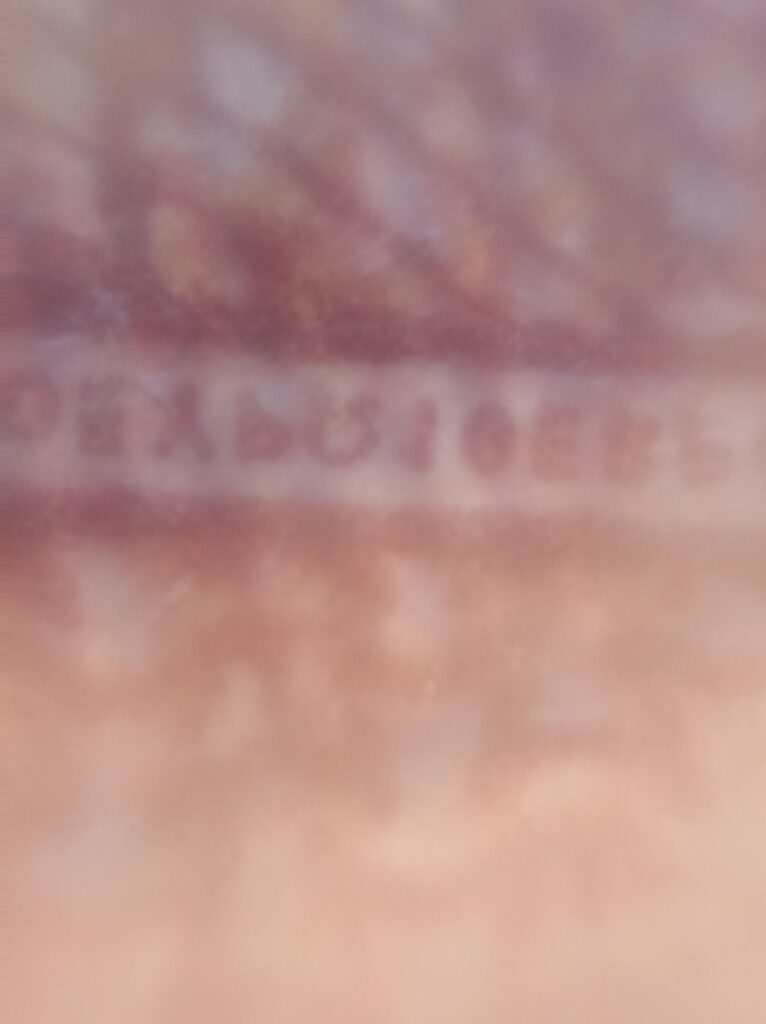
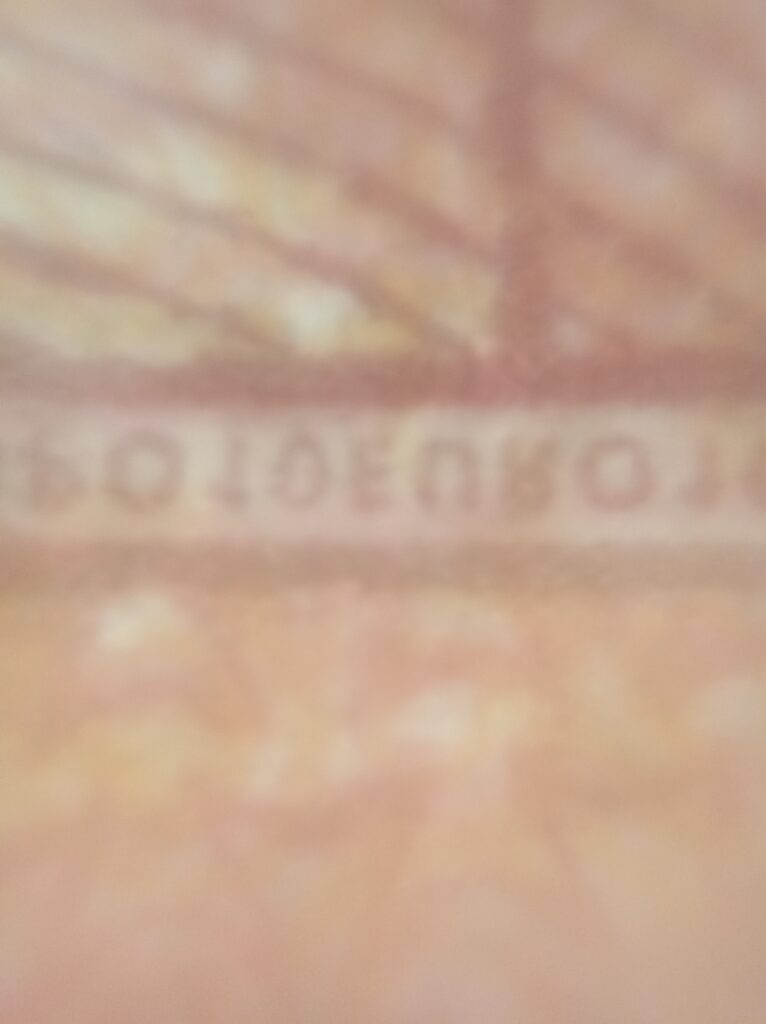
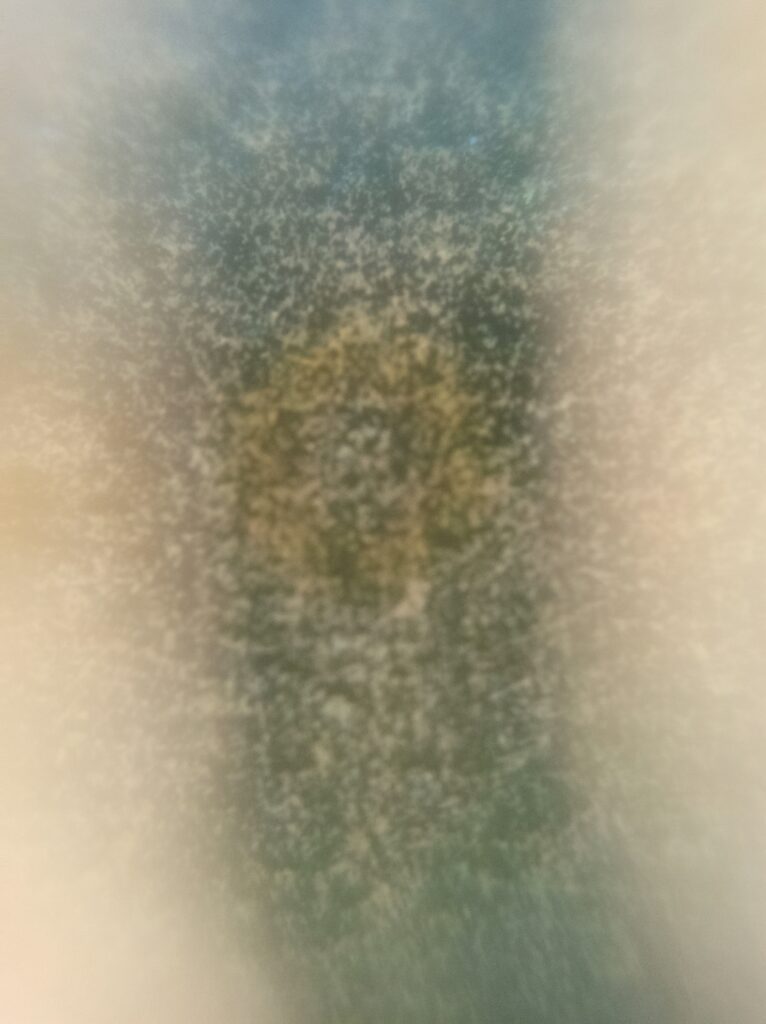
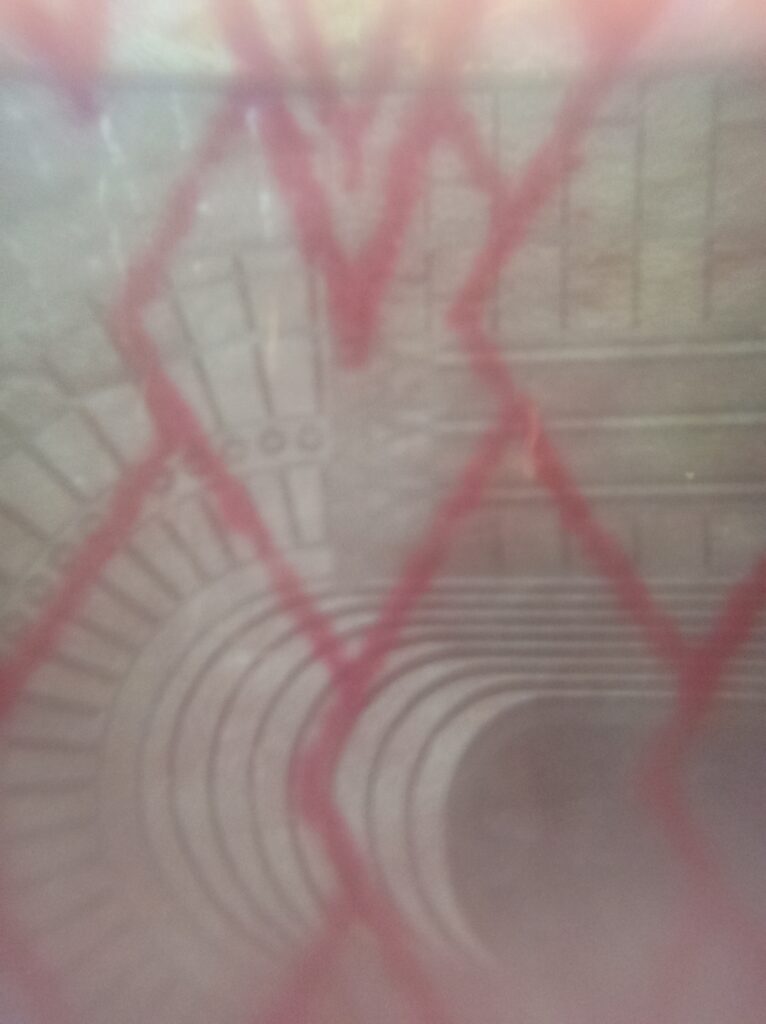
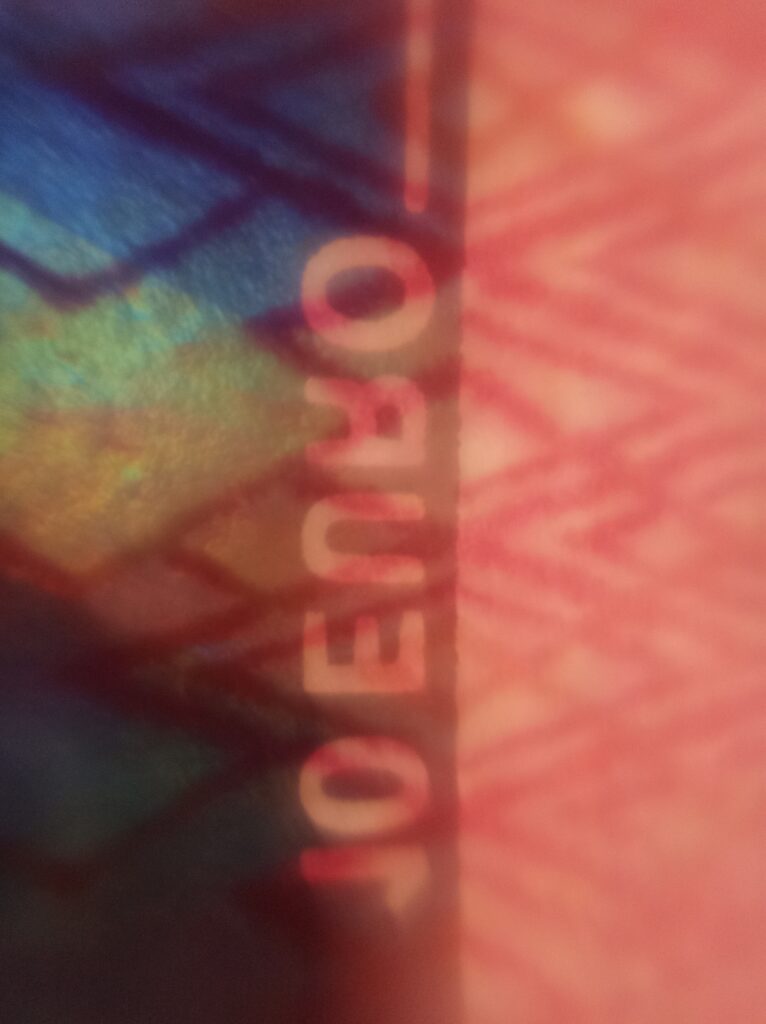
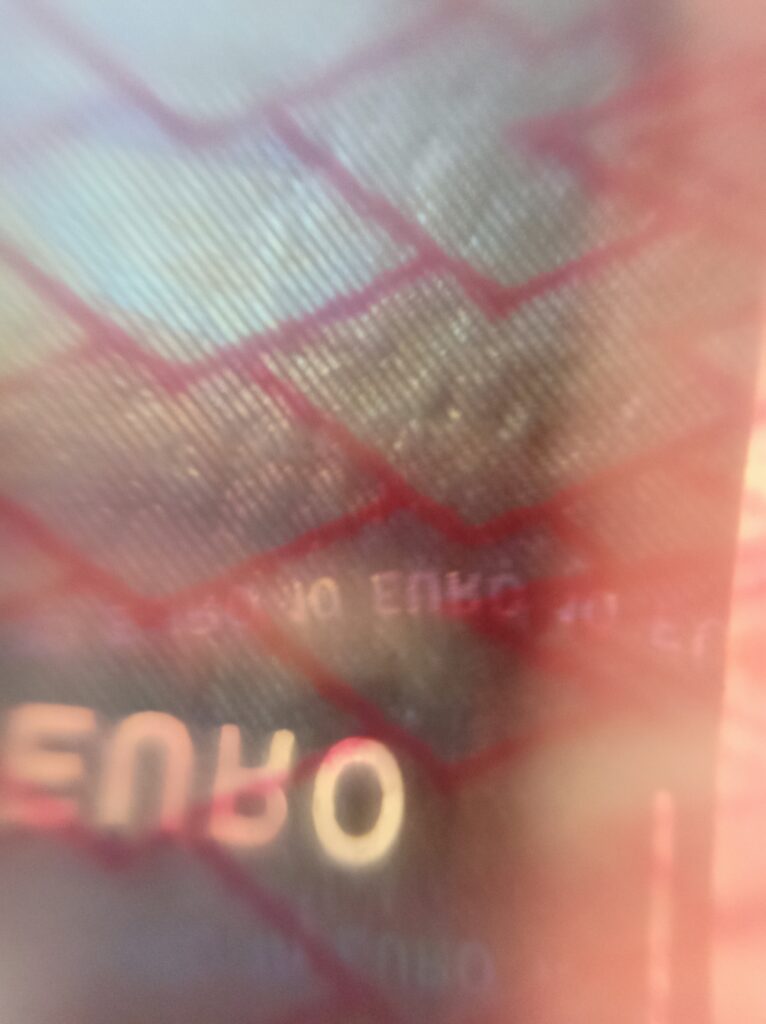
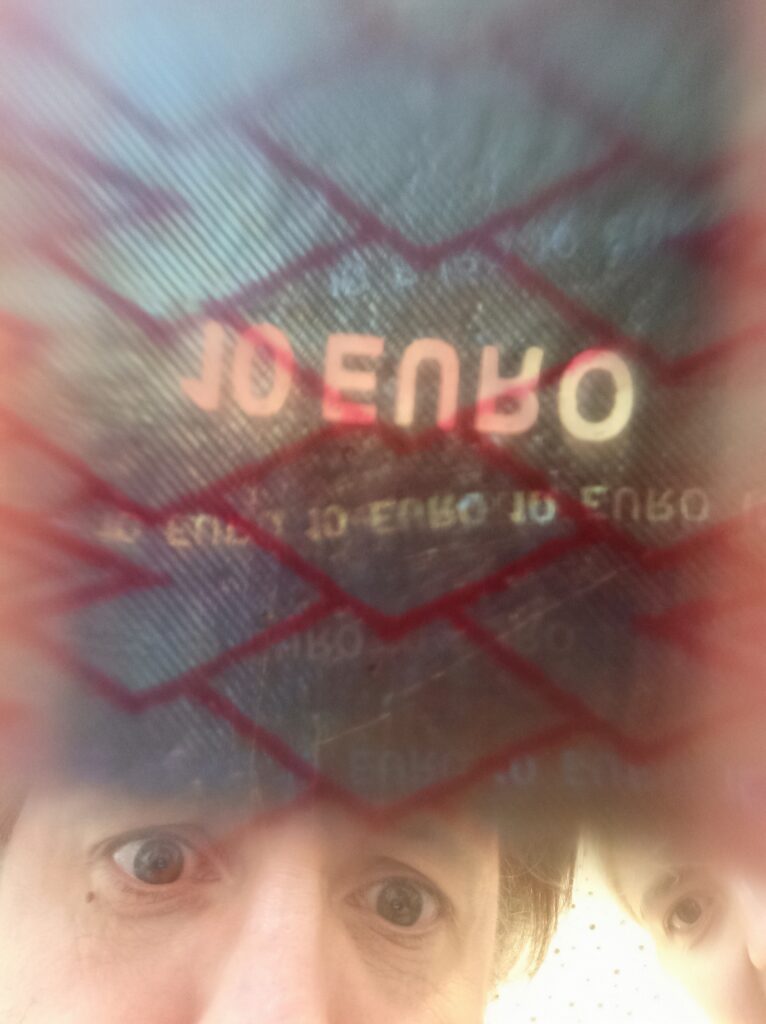
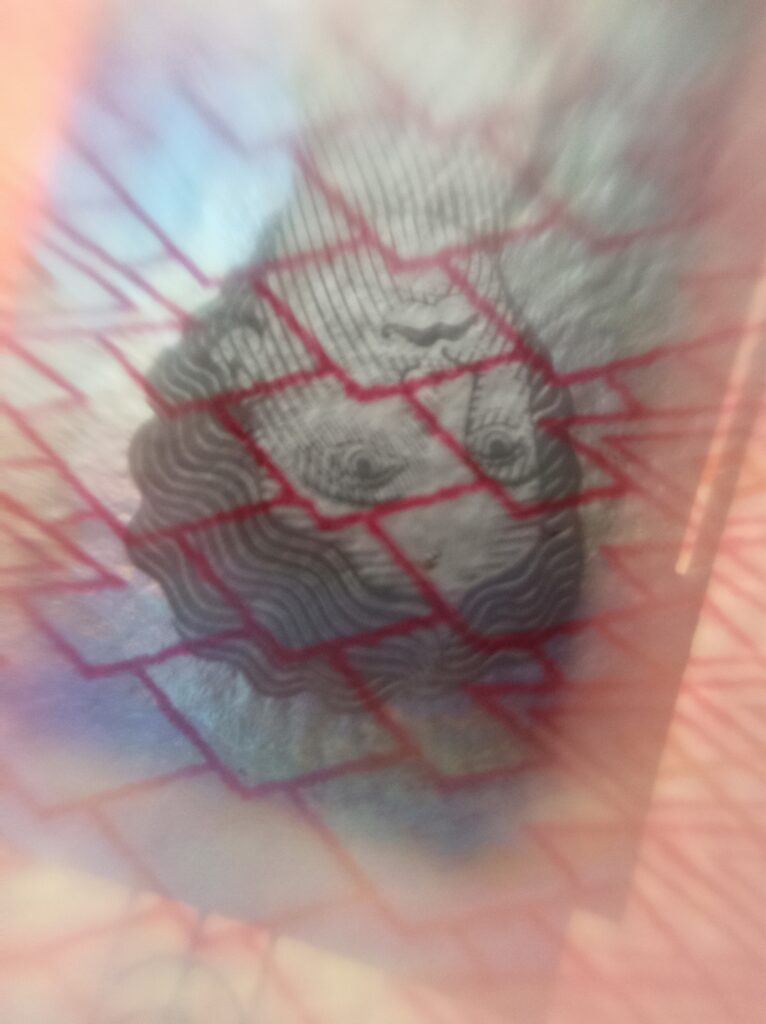
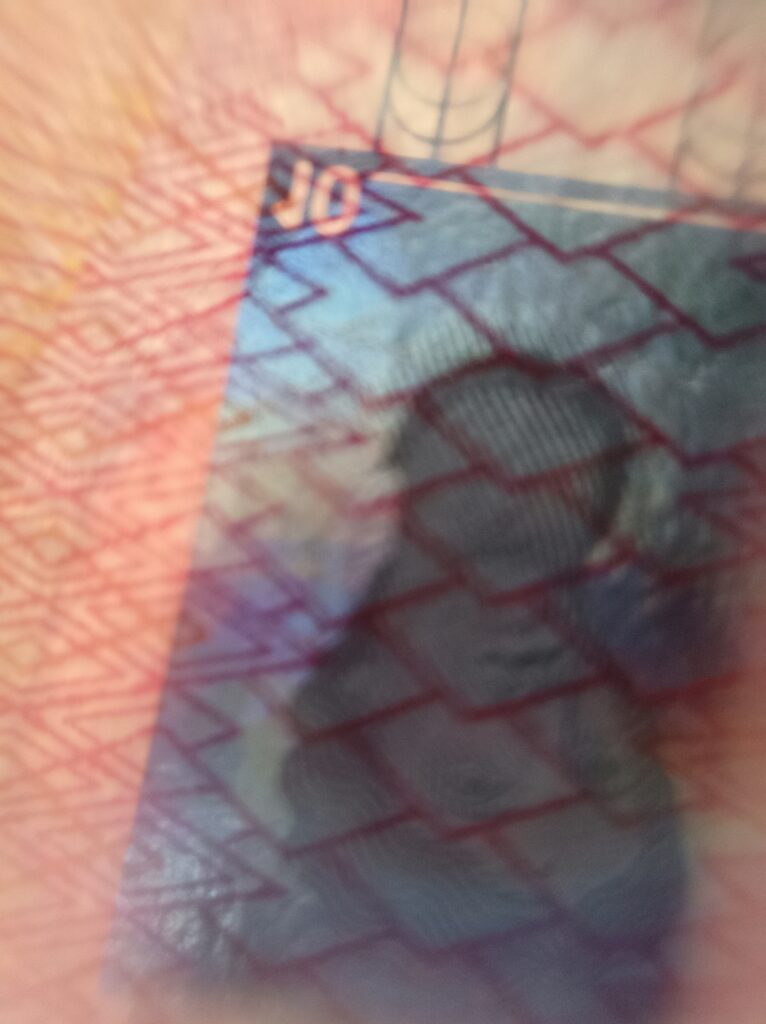
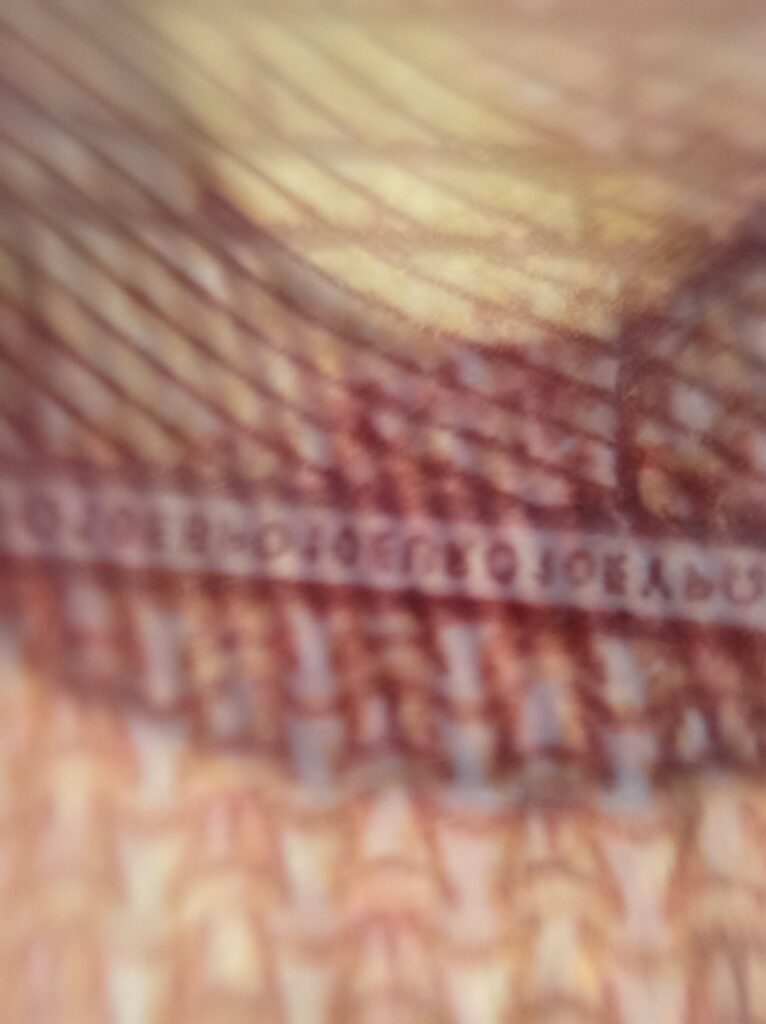

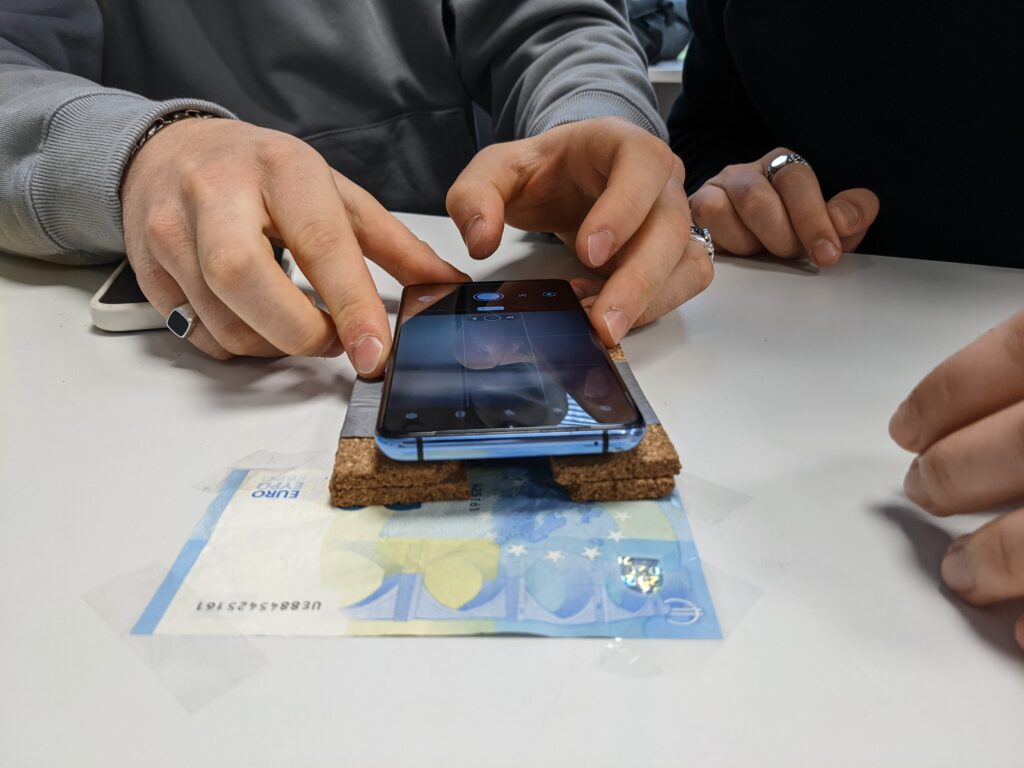
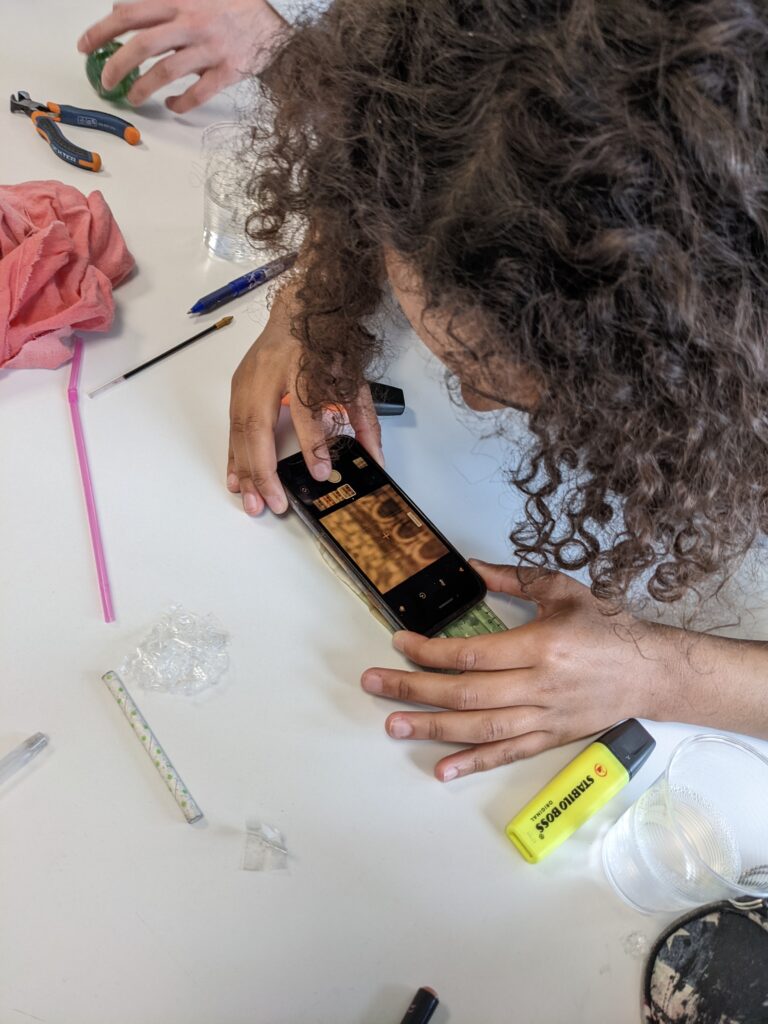
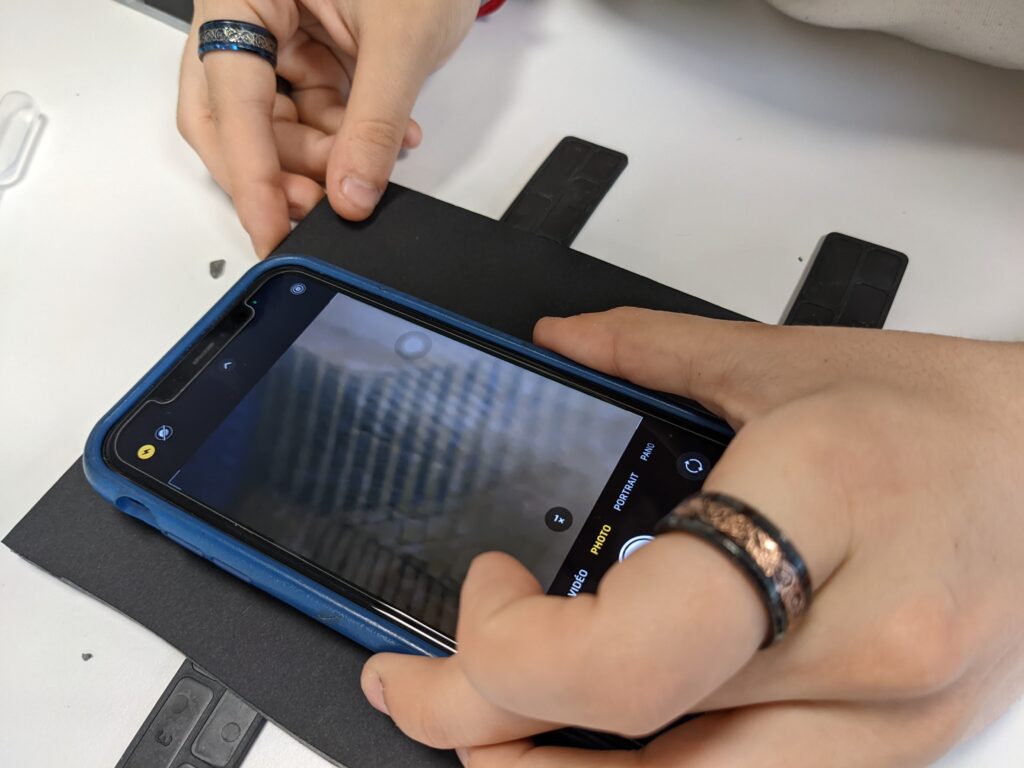
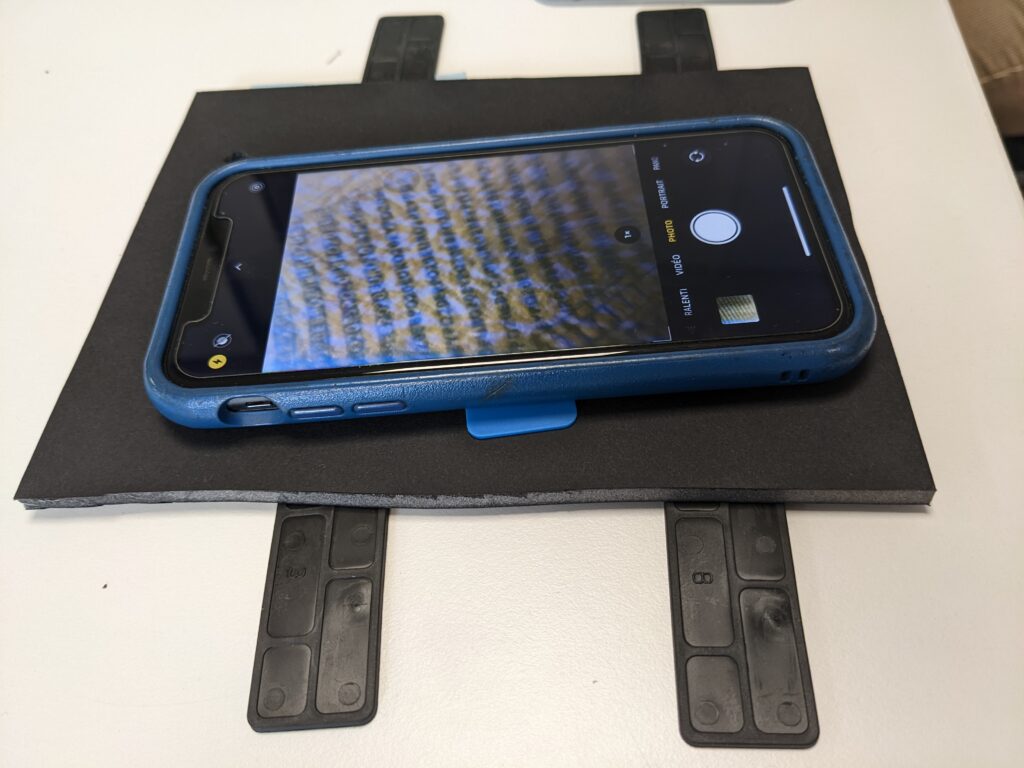
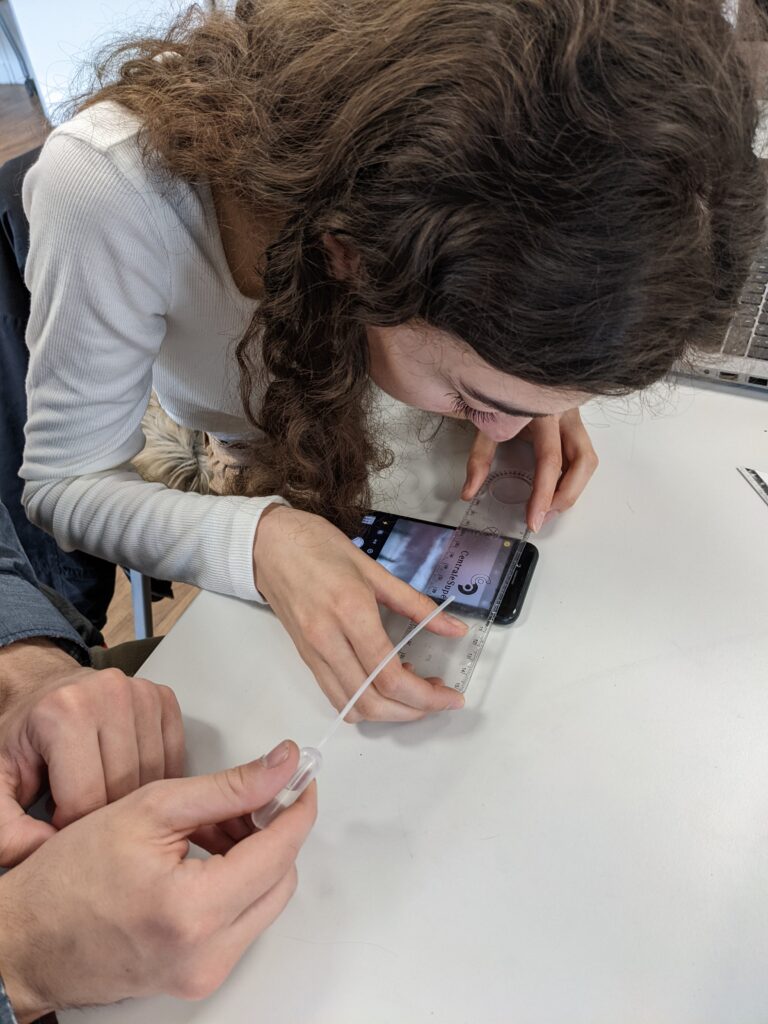
TRANSITION
show video “KJU T9A”: the agent in South Korea indicates that the user manual must now be transmitted to the agent in North Korea but without being detected! Idea: use YouTube accessible in North Korea by creating a tutorial-style video that explains the principle of the microscope, the physics, how to manufacture it and characterize it by slipping into an existing channel. So make a youtube or tiktok video like a famous youtubeur or tiktokeur who does all that. And they’ll put it online and the agent can watch it. Protocol to follow: YT98
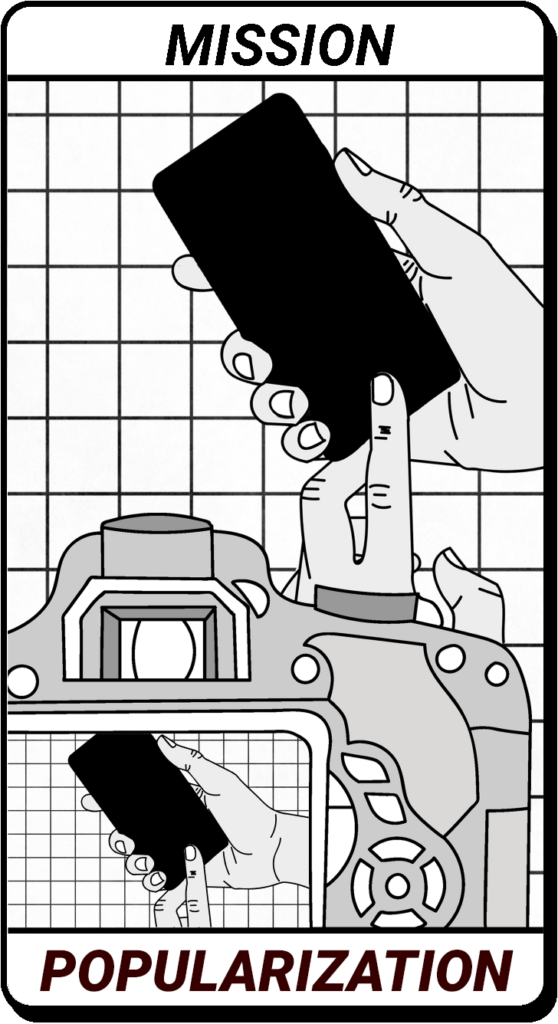
TASK : VIDEO OUTREACH
DAY1 / afternoon
Students must design Youtube-style videos in small groups that explain the principle of the microscope, how to make it, etc.
First encourage them to identify a youtube channel or type of format they will emulate (Bill Nye, famous youtubers, documentary, tiktok, etc). Check that they are not all the same.
At the end of the event: collective screening of all the videos. They are informed that in parallel these videos are sent to the North Korean Youtube which allows all scientific videos to pass.
On the practical side: warn them that editing takes a long time to do, and encourage them to do it live on their smartphone. Force them to do a little retroplanning that anticipates the time of editing and exporting the video.
Useful links: editing on Android smartphone with Youcut or on iOs with iMovie or KLinemaster / on PC or Mac with VSDC https://www.videosoftdev.com/fr or iMovie or MovieMaker / stop motion on smartphone: stop motion studio
At the end of the event: collective screening of all the videos. They are informed that in parallel these videos are sent to the North Korean Youtube which allows all scientific videos to pass. We then wait for the agent’s return to South Korea (for the next morning).
TRANSITION
DAY 2 / morning
show video “KJY T10A”: the agent in South Korea indicates that they have recovered a communication from the agent which indicates PZ29: needs a music code to send them a secret message.
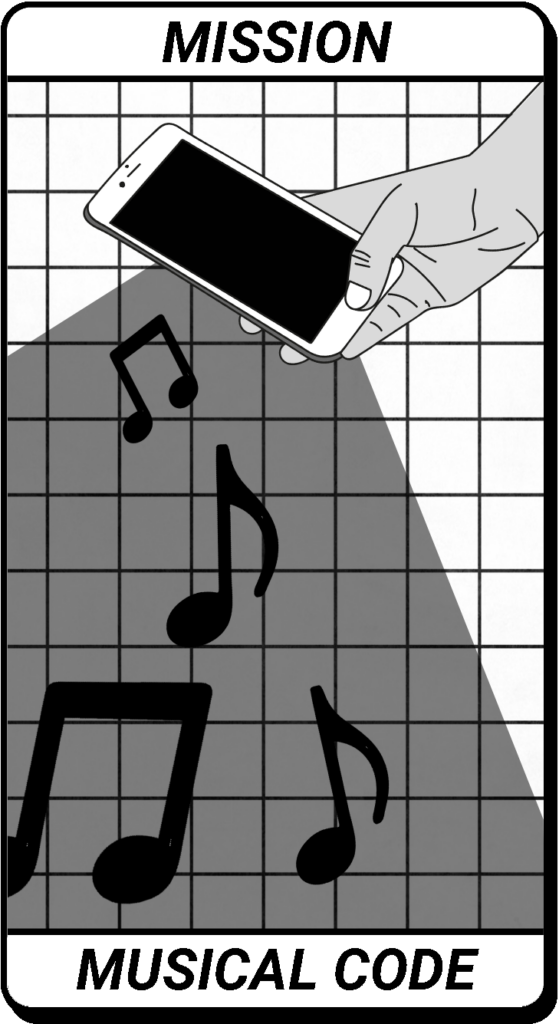
TASK : MUSICAL CODES
The test consists of making and testing various musical instruments (PZ29 protocol). Students use everyday materials for this. They work in groups, and distribute the 26 letters of the alphabet (reduce the number of letters if necessary). Each group makes the most diverse instruments possible, and each note/frequency emitted corresponds to a letter.
The material used is material of everyday life, a list is proposed. In this list, rubber bands, tubes, bottles, boxes and jars are particularly useful.
To test the devices, each group plays a piece of music with the notes they have prepared, and the other groups must recognize the piece (this implies that the groups must agree at the beginning not to use the same notes ).
Optional: ask the students to best characterize the notes emitted (audio spectrum, importance of harmonics, reproducibility).
Device manufacturing time: 1h30 to 1h45
In addition to the manufacturing time and the tests, it is necessary to plan a little consultation time (distribution of the marks between the groups)
Final test: 20 to 30 minutes: all the groups, one after the other, play a piece of music, which the other groups must recognize. The devices are then sent to the Seoul spy for use.
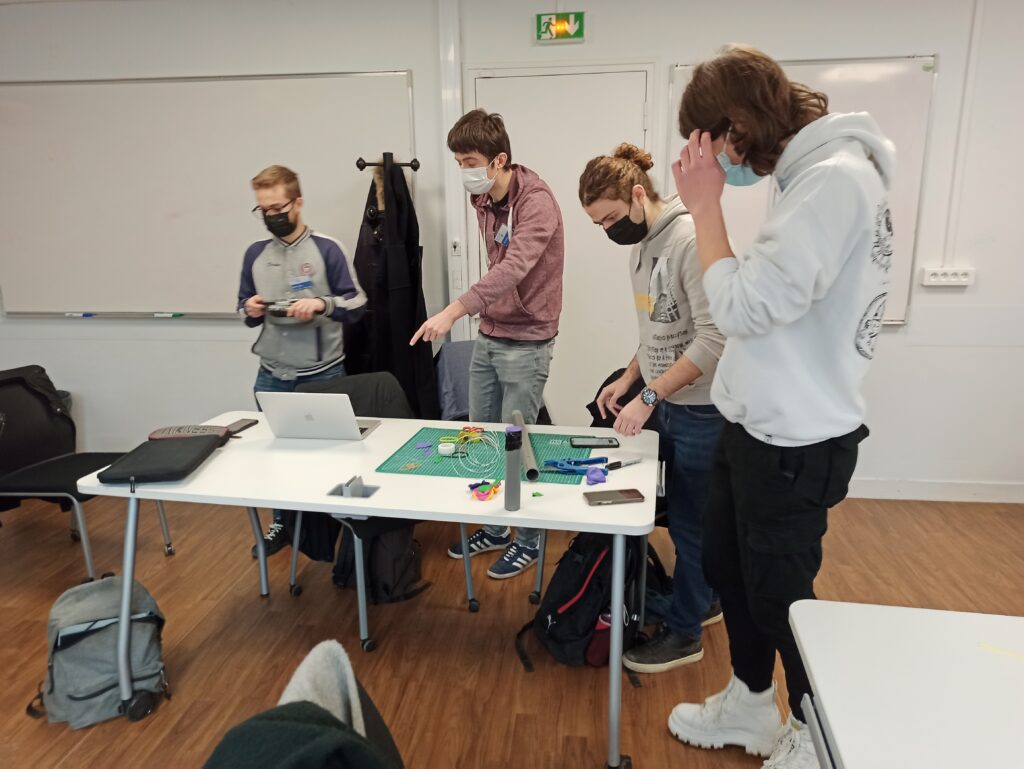
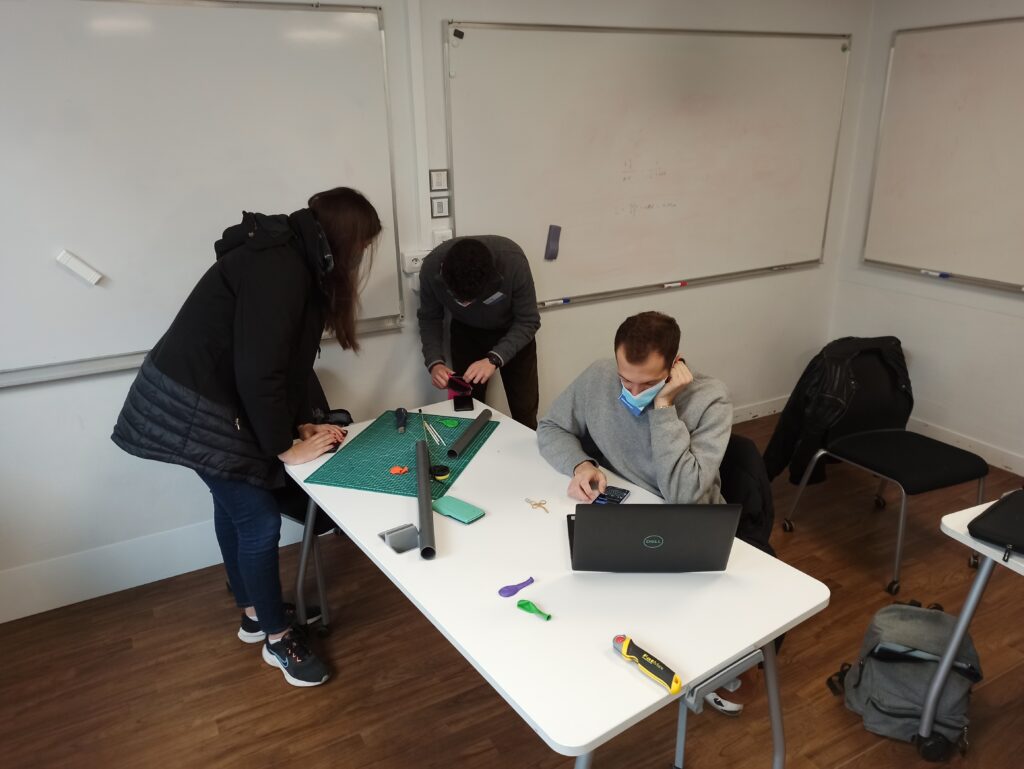
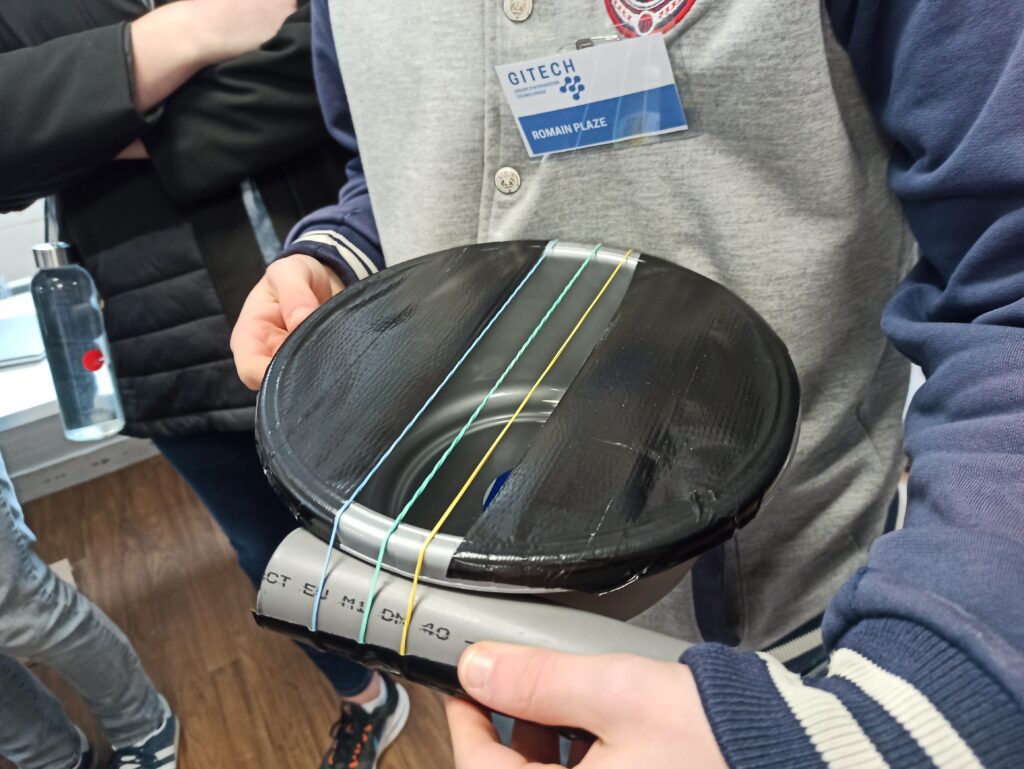
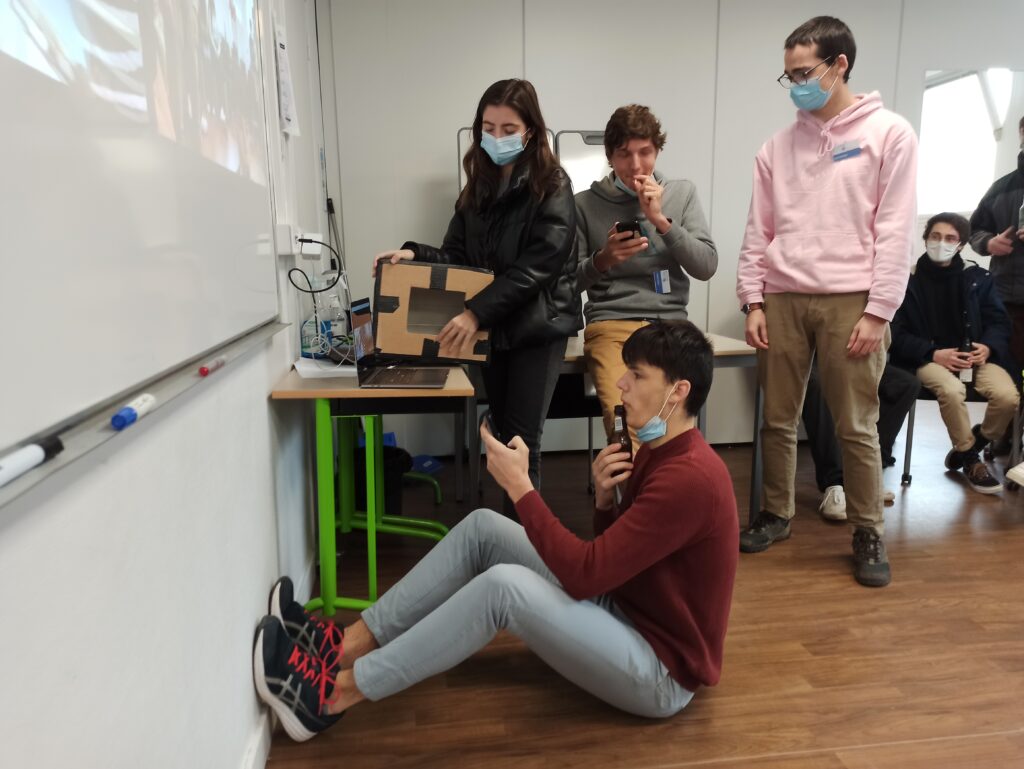
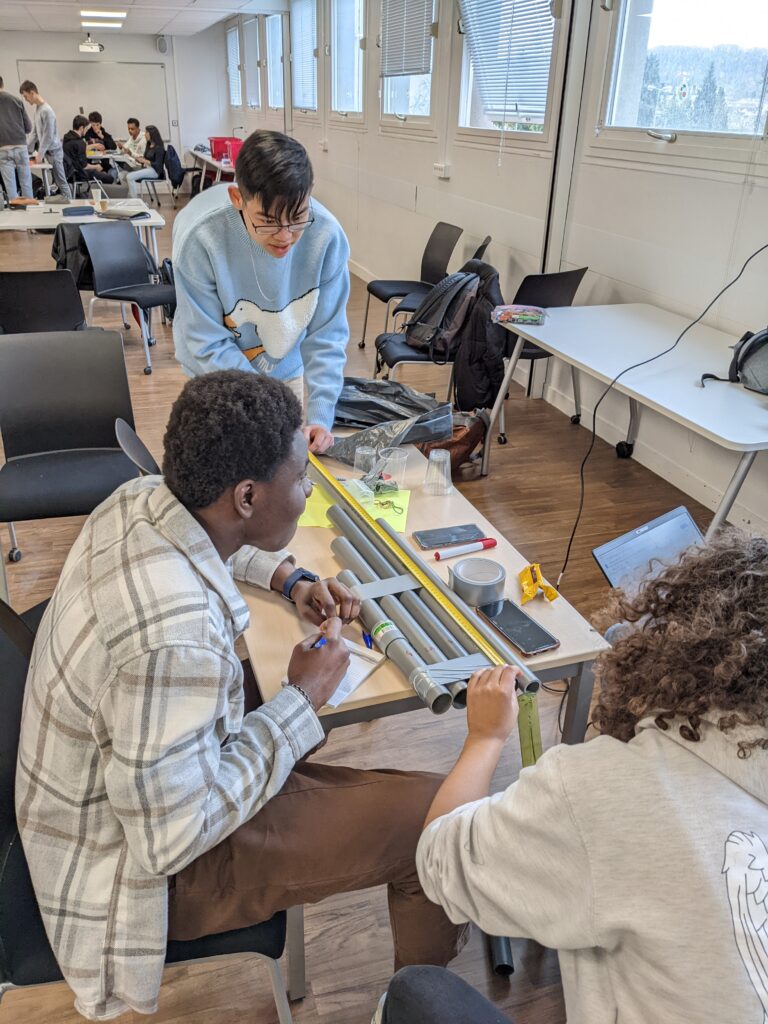
TRANSITION
show the video “KJU T10B”: An agent in South Korea indicates that he sent the protocol, and that his contact sent him a musical piece which he has just decoded: it says “recovered smartphone Kim Jung Un – You send it by DMZ channel – Request solution GH12. The spy basically explains what it’s all about: he’s going to send them from a wall in the DMZ.
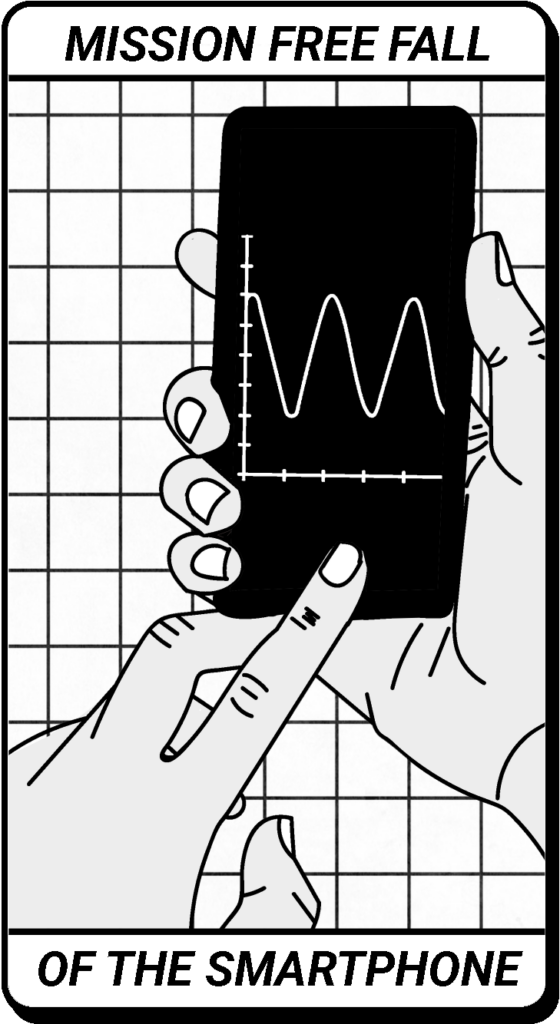
TASK : SMARTPHONE FALL
JOUR 2 / après-midi
The test consists of making a protection to be able to drop a fragile object from above by following the GH12 protocol. Frugal materials are provided, and students work in groups.
Choose from 2 versions of the GH12 protocol to give to students:
– a simple version, the only instruction is that the egg resists the fall.
– a more advanced version, which requires students to do a video analysis of the fall to assess the frictional forces of the air.
Do not hesitate to adjust the constraints according to your students and your objectives, for example:
– the camera must be able to film the fall, which forces the students to slow down the fall (set a minimum duration)
– once the device is on the ground, you have to be sure that the camera has a precise orientation (to film in the right direction).
This activity can be more or less advanced depending on the constraints you impose:
– tracking of the fall by video analysis (use the Fizziq application for example)
– impose a minimum time and orientation constraint during the fall in order to film it.
Typical process :
Device manufacturing time: 1h30 – The students design a device in groups, test it, improve it.
Final test: 20 to 30 mn : all the groups, one after the other (or all at the same time if time is short), test their device in real size (drop it from a height of about 5 m) and check whether the conditions emitted by the protocol are verified. For this test, the smartphone is replaced by an egg: the egg must be intact at the end of the fall. All the students must then agree on the device to be sent to the astronauts (take a photo of the plan and the device that is sent to the spacecraft).
Optional: if we want to avoid having to choose between the different devices (to avoid competitive tensions), we send the plans of all the devices to the astronauts as well as their test results, and we say that they will be the ones who will choose according to their constraints local (equipment, space suits, etc.)
If you have many students: groups of 3/4 students work well. If the groups are larger, we can provide tutorial writer functions: some students take charge of writing instructions for making the device. We can insist on the important nature of this document and its duty of clarity. Otherwise, photos are enough to communicate with the astronauts. If the groups are larger, plan a trajectory analysis activity that is supported by a few students
Equipment: The C2309 kit
These are what the spy has. It can be modified according to your stocks. This is small DIY material, the list offered (in pdf and pptx format) has been tested and works but can be changed easily. Ideally, each group should have a C2309 kit at their disposal, but in practice the easiest way is to make the equipment available in the room. The quantities available are then greater than what is indicated in the kit (you can have 100 straws, even if the kit indicates that the spy only has 10): the groups must be careful not to exceed the quantities in their device (but several groups can use 10 straws).
DIY equipment: in addition to the kit, provide cutters, scissors, glue guns, pliers, protective and cleaning equipment: cutting mat, plastic sheeting, garbage bags, brooms… Eggs must also be provided for the final test.
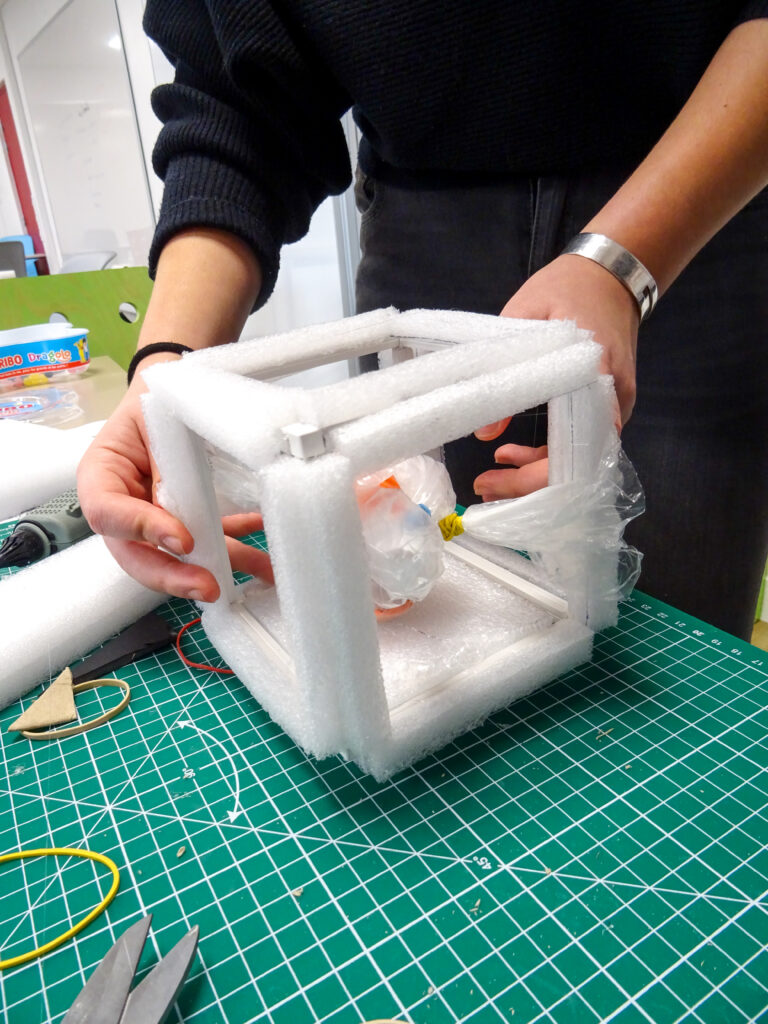
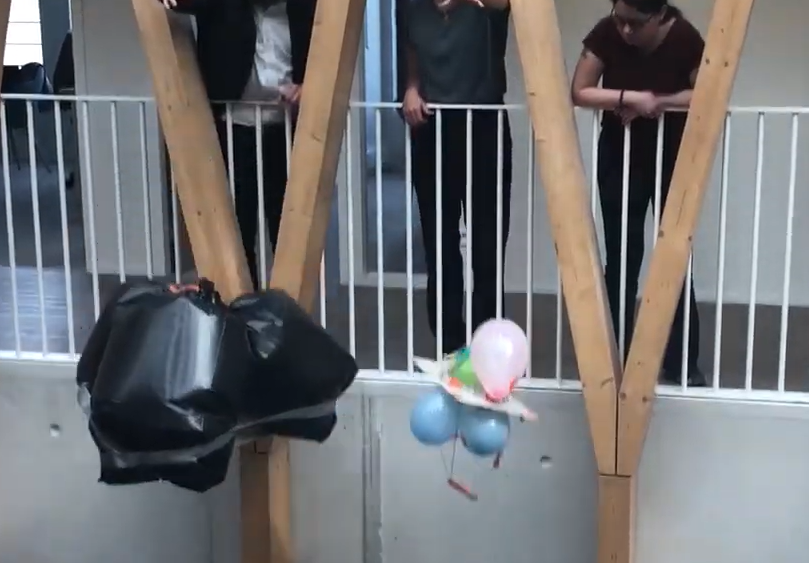
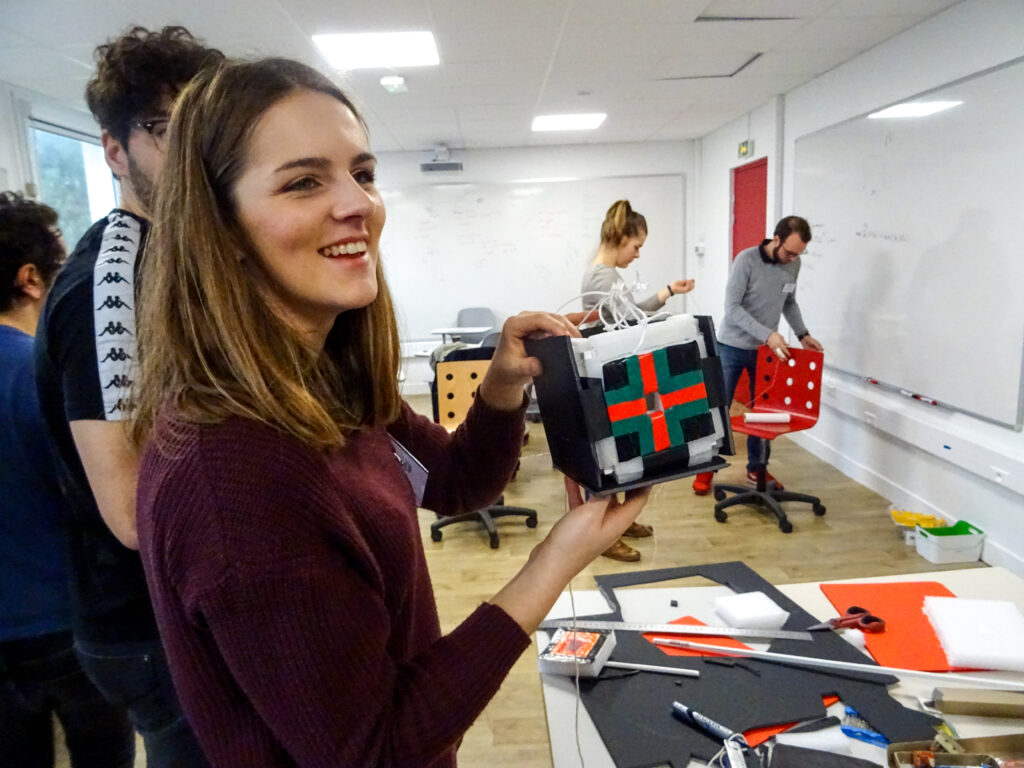
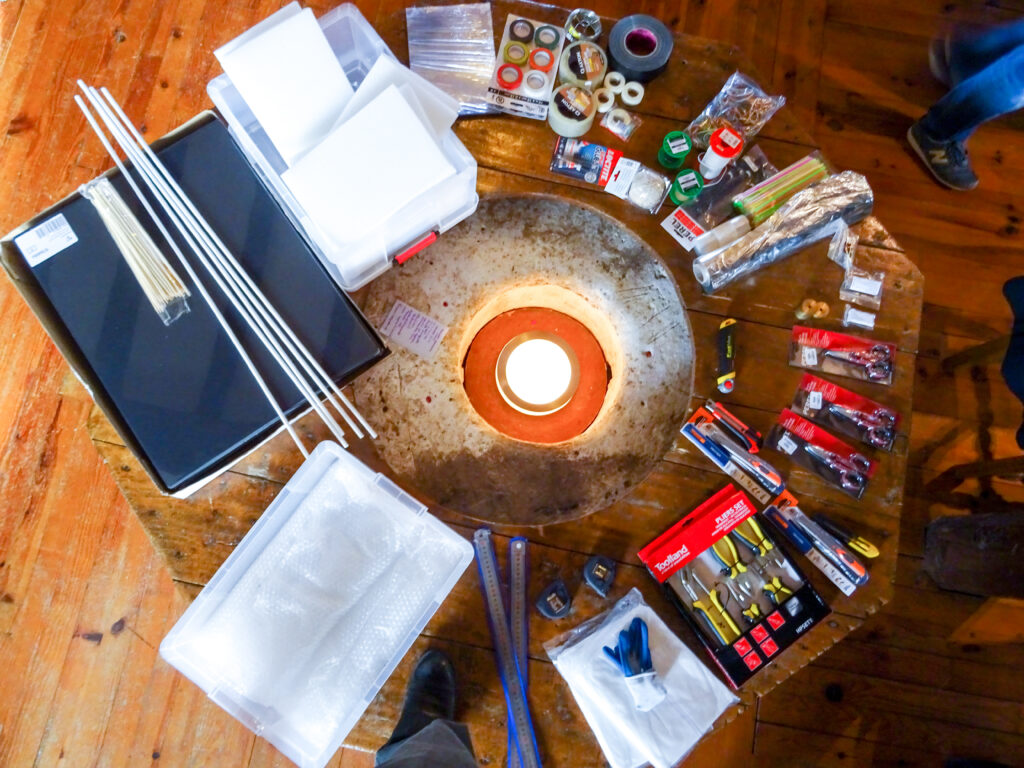
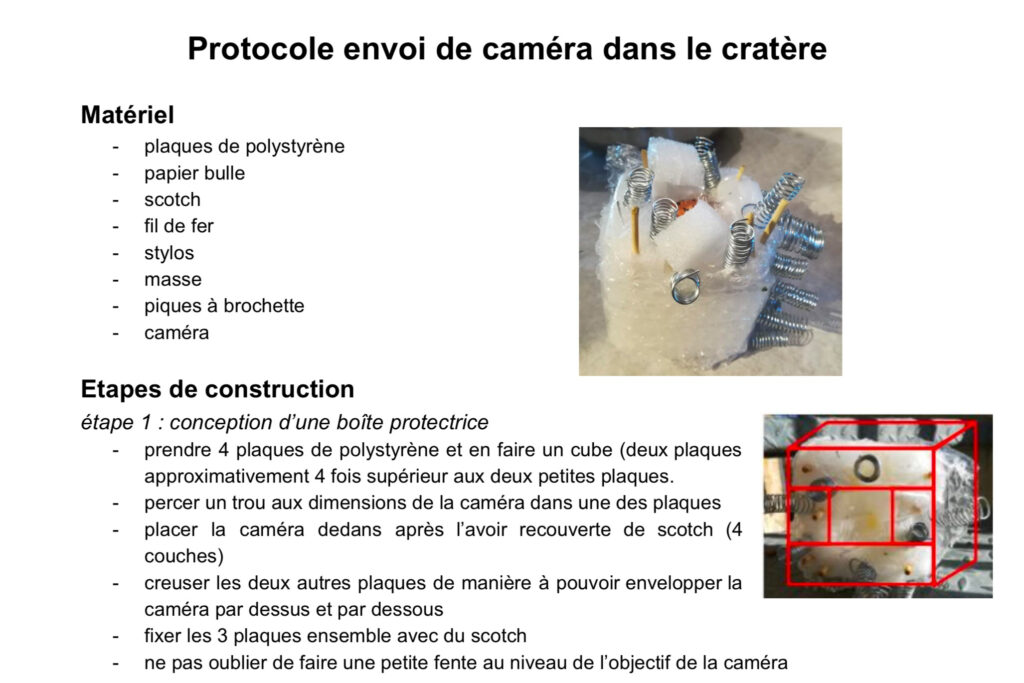
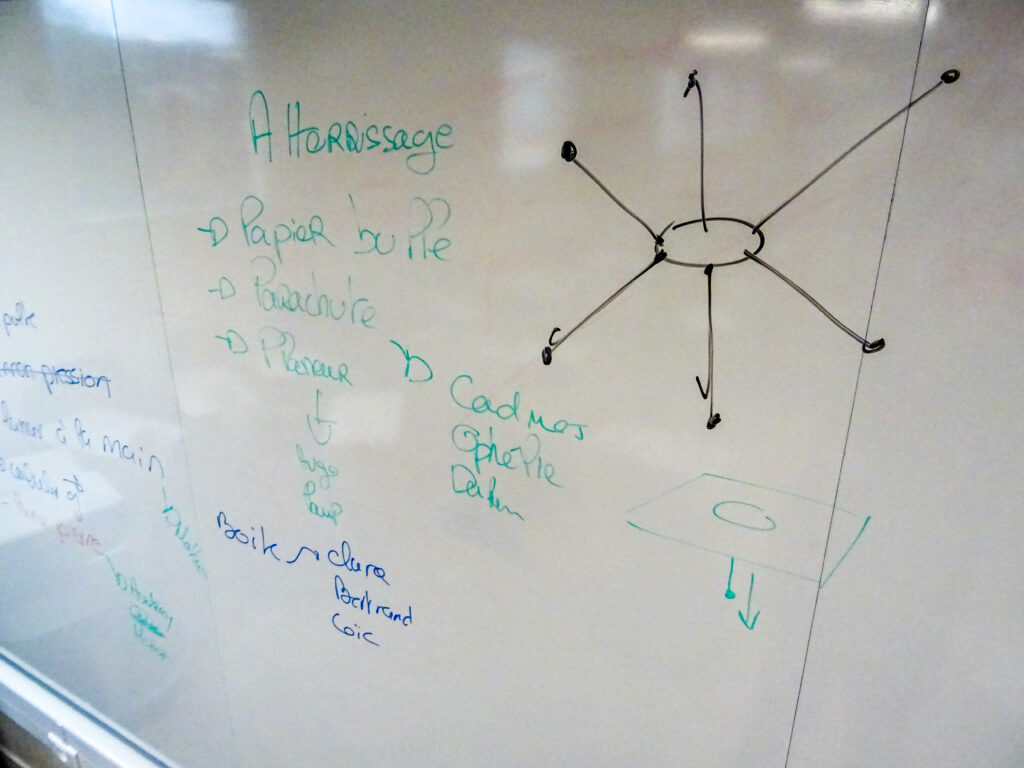
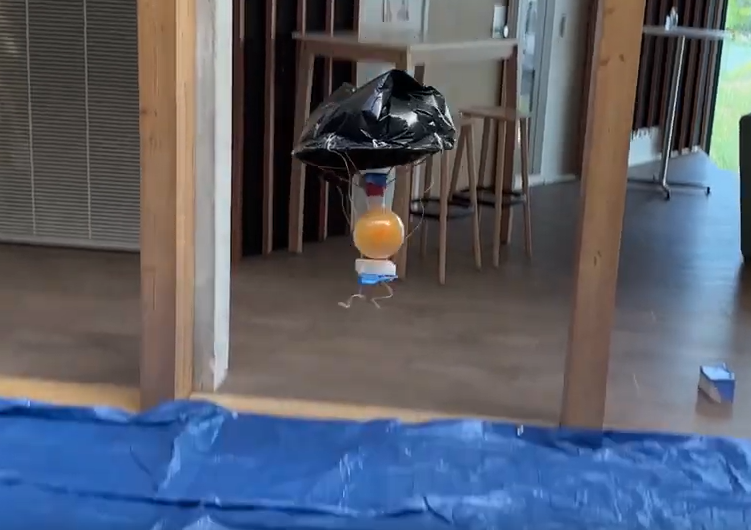
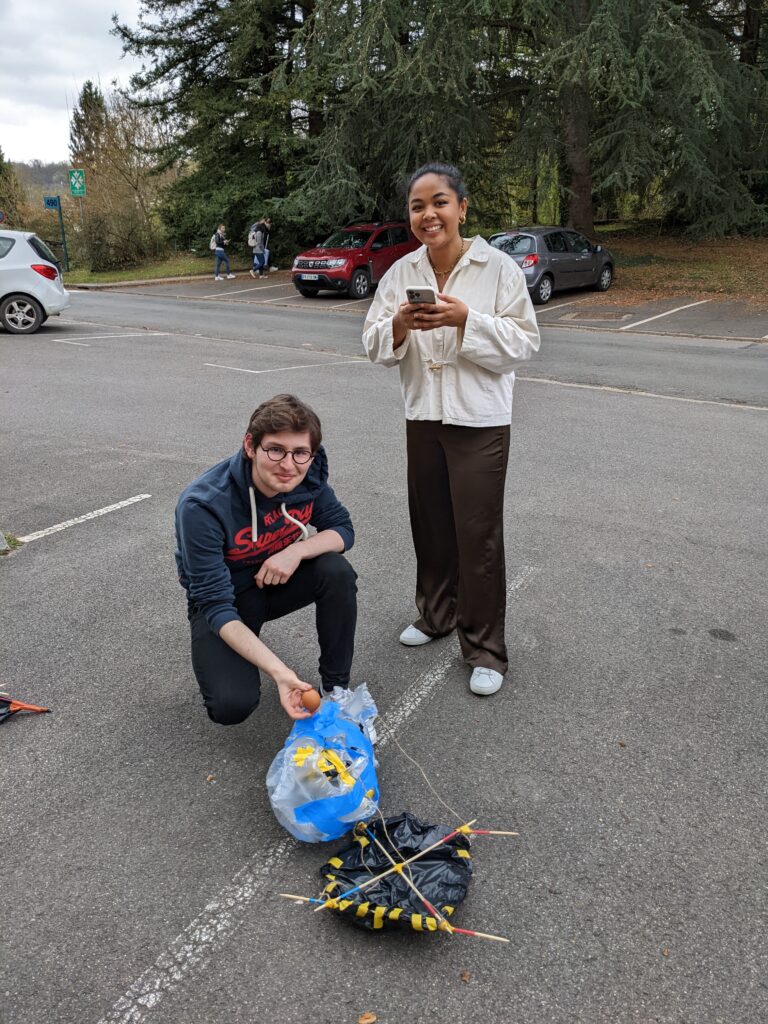
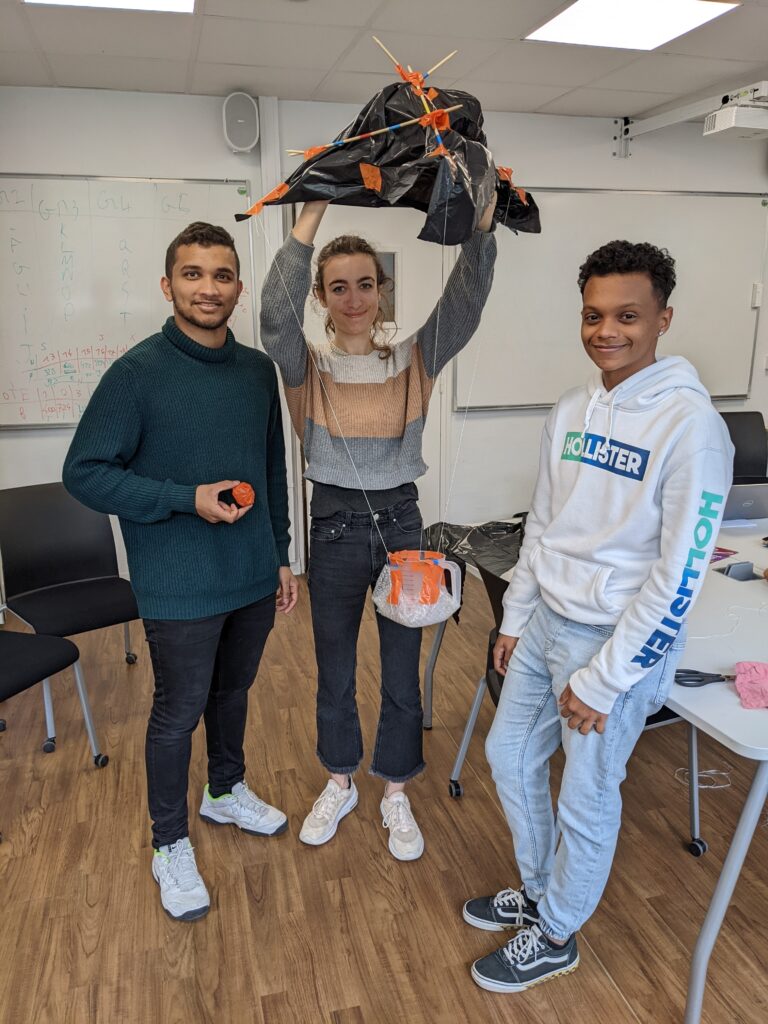
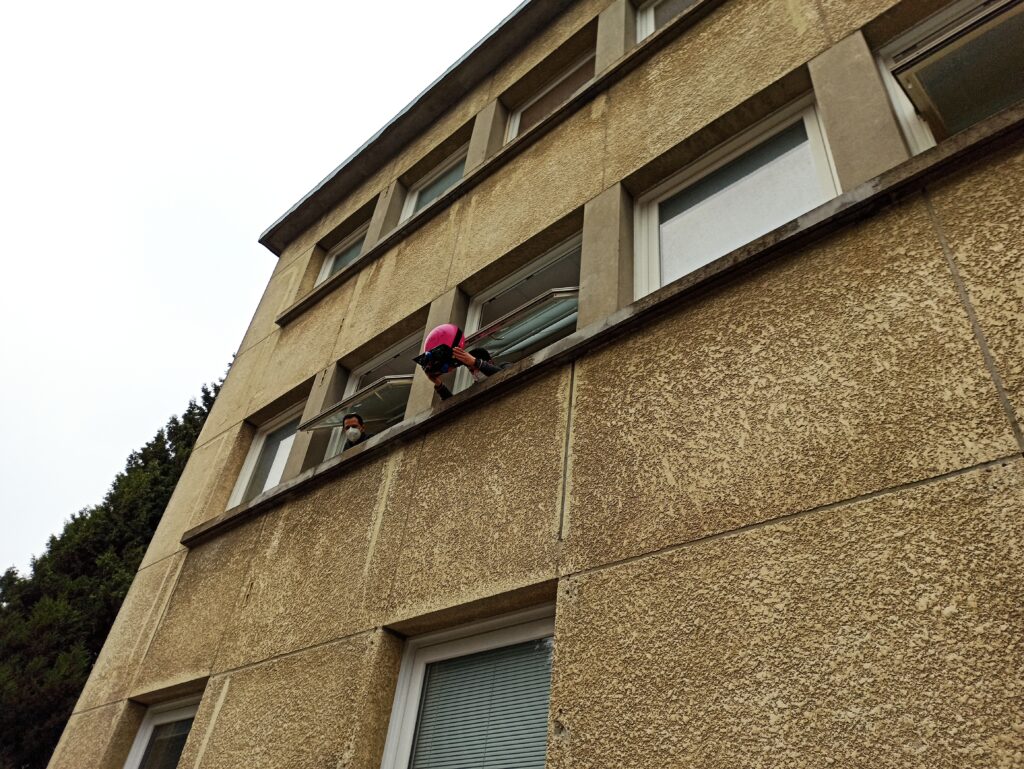
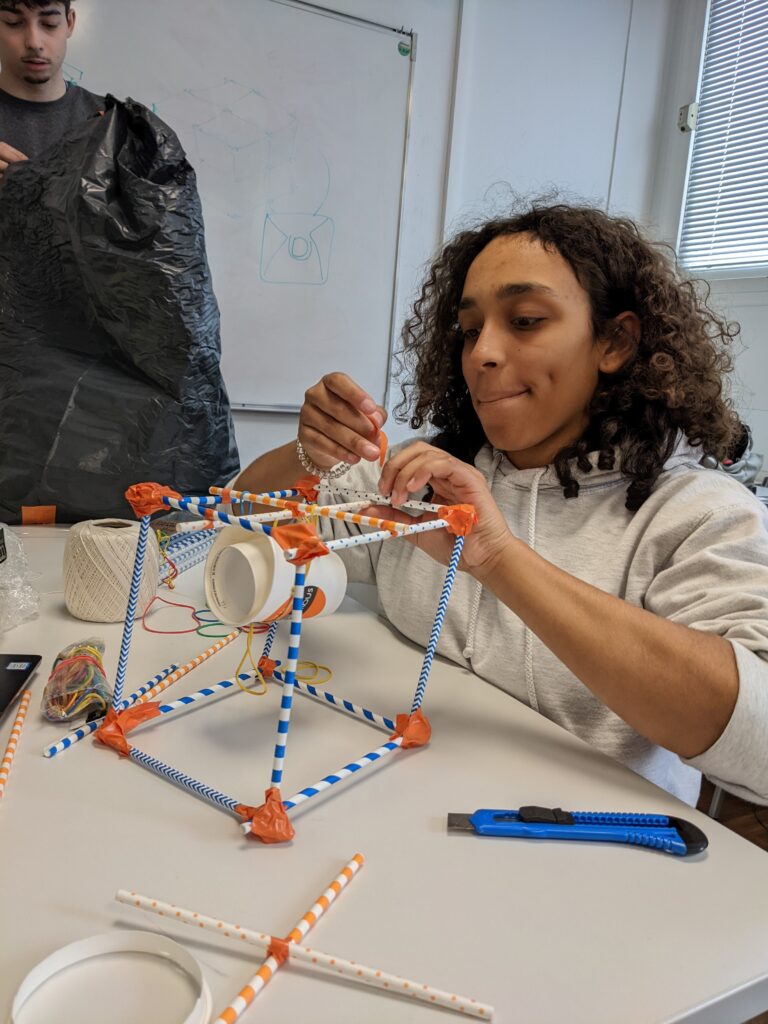
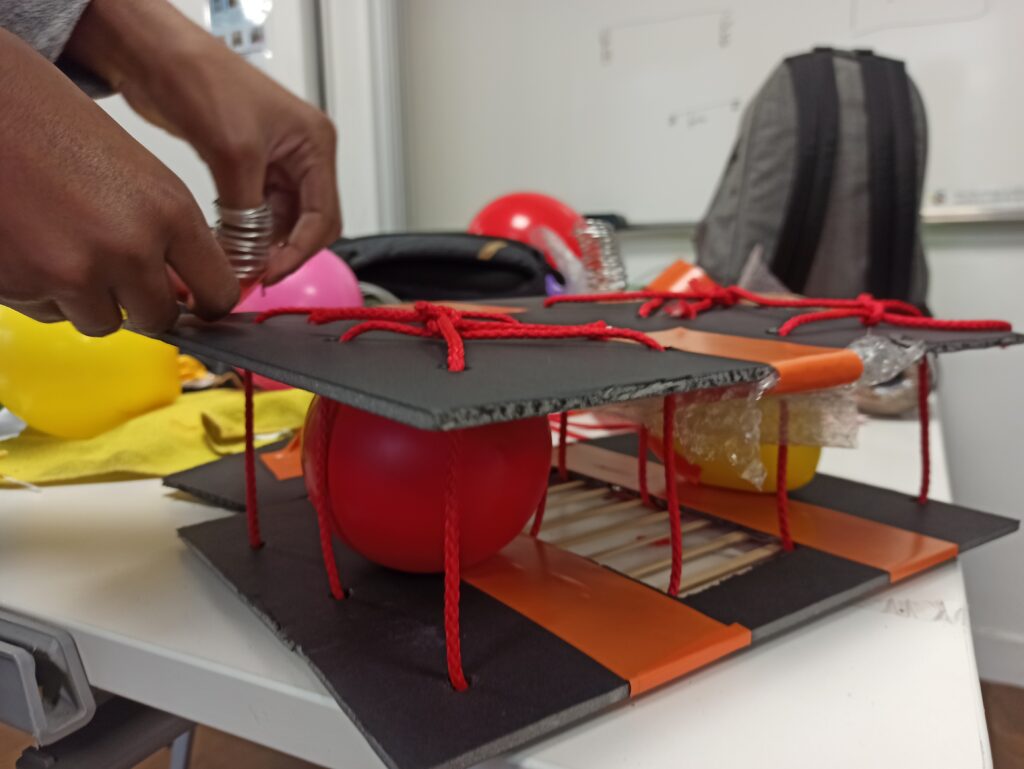
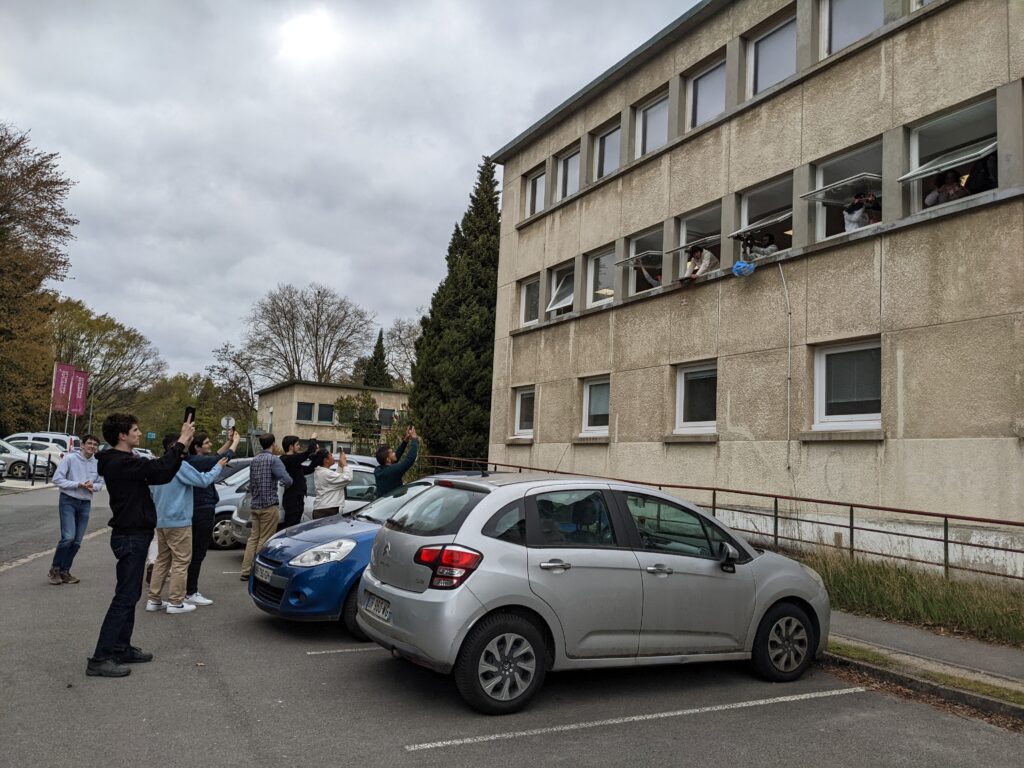
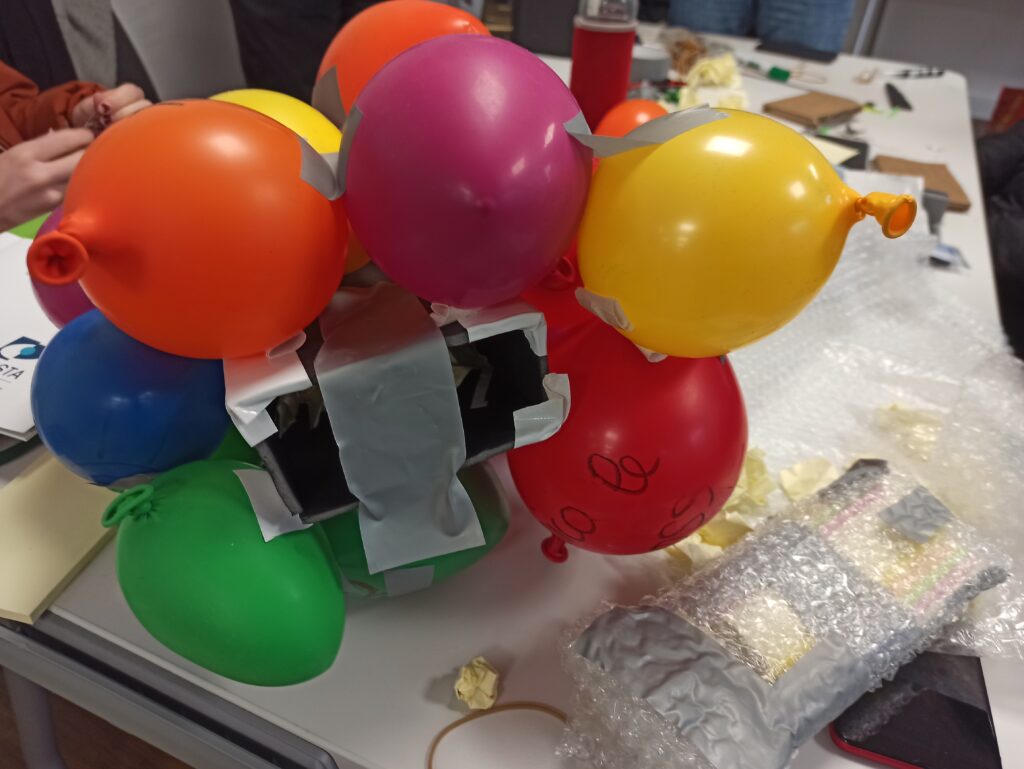
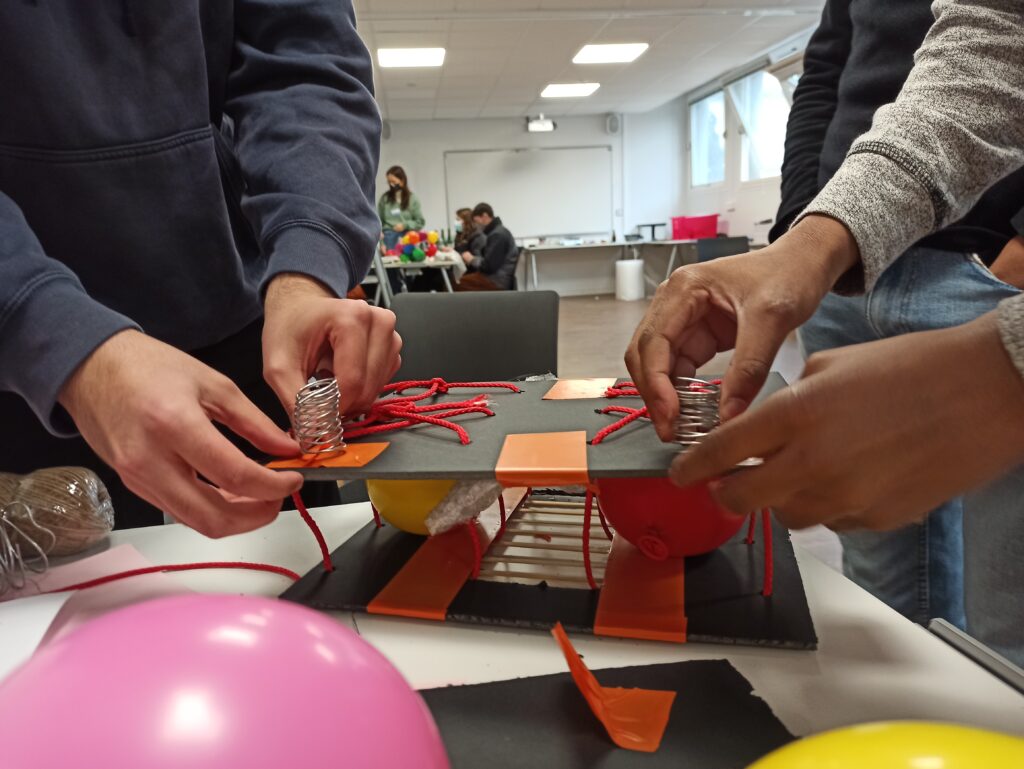
EPILOGUE
They receive a message indicating that a video from the spy services will arrive after a certain time (good time for a short break or tidying up):
final video KJU E6: an agent in South Korea tells them that the services have recovered the smartphone – it allowed them to access the codes of the last missiles then end credits (you can add the names of the participants, students and teachers to the credits).